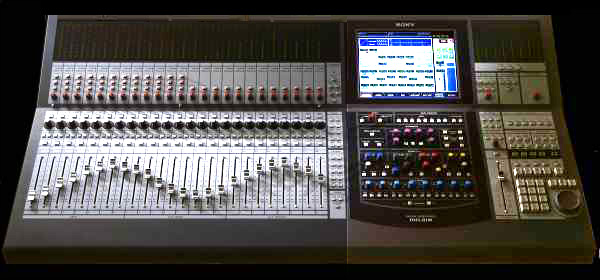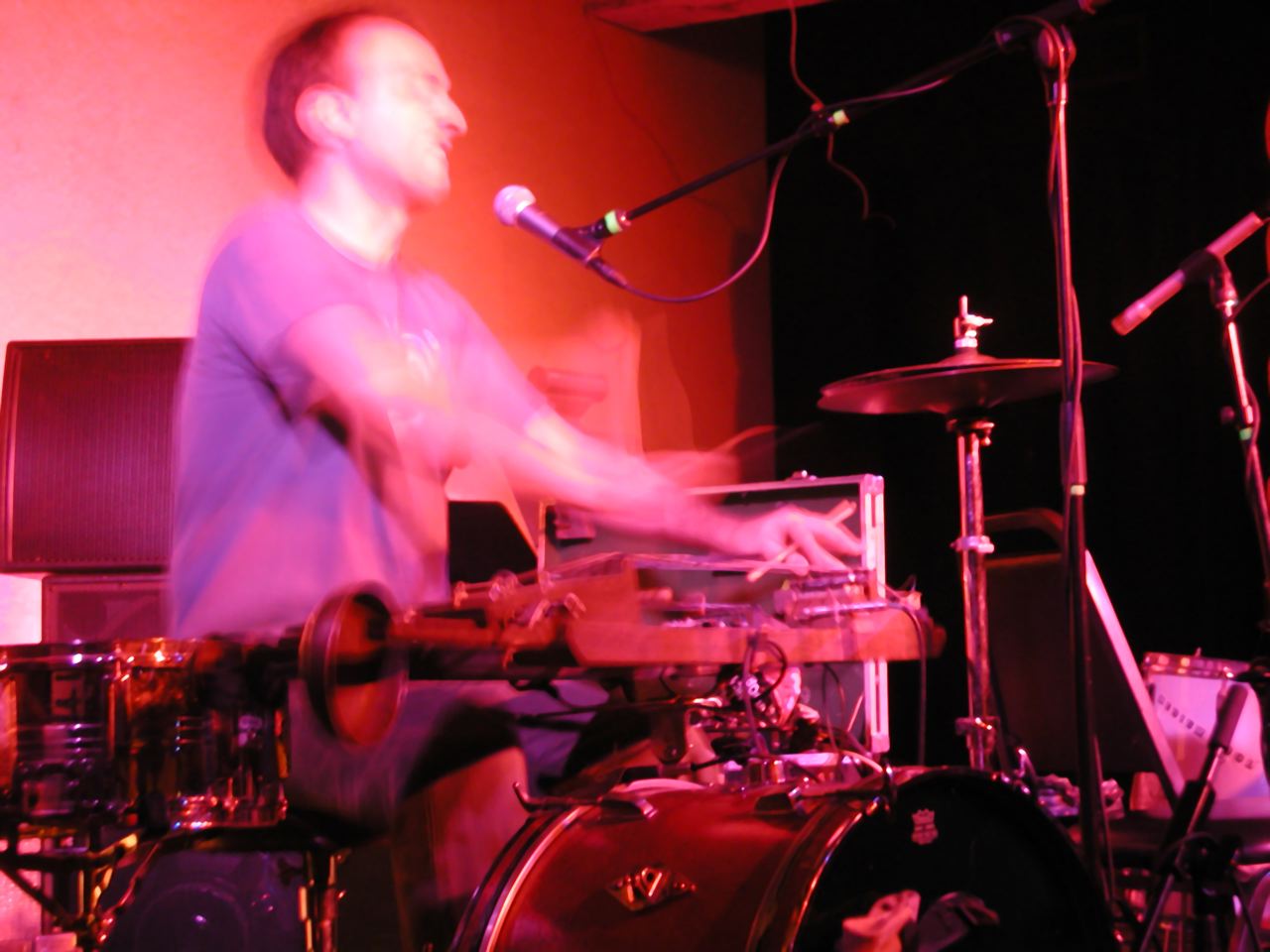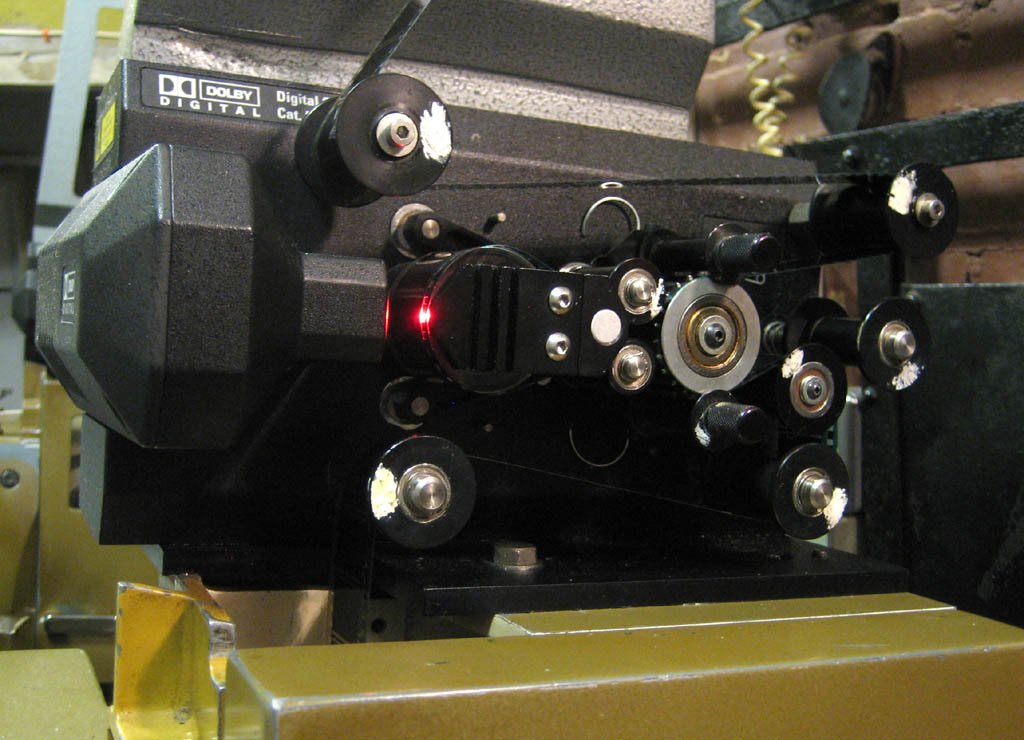|
Audio (Blue Man Group)
''Audio'' is the debut album by Blue Man Group, released on December 7, 1999, through Virgin Records. The album was nominated for the Grammy Award for Best Pop Instrumental Album. This album was released in two versions: The DVD had 5.1-channel versions of the music in both DVD-Video (using Dolby Digital) and DVD-Audio formats (one on each side) and a CD that had a 2-channel stereo mix of each track. A behind-the-scenes video of the album is viewable on a promotional 2000 VHS known as ''Audio Video''. This video is also included as a bonus on the Audio 5.1 Surround Sound DVD. Reception Heather Phares of Allmusic.com rated ''Audio'' three out of five stars. She explained that it "reflects over a decade's worth of musical and theatrical innovation." Although she stated that "the spectacle of the group playing its sculptural, surreal-looking instruments is absent from the album," she concluded her review by calling it "an album that proves the Blue Man Group is as innovative ... [...More Info...] [...Related Items...] OR: [Wikipedia] [Google] [Baidu] |
Blue Man Group
Blue Man Group is an American performance art company formed in 1987. It was purchased in July 2017 by the Canadian company Cirque du Soleil. Blue Man Group is known for its stage productions, which incorporate many kinds of music and art, both popular and obscure. Its performers, known as Blue Men, have their skin painted blue. They are mute during shows and always appear in groups of three. The company has continuing shows in Berlin, Boston, Chicago, Las Vegas and New York City. A typical production employs seven to nine full-time Blue Men who are selected by audition. In addition to their stage shows, Blue Man Group has toured nationally and internationally, appeared on TV programs as characters and performers, released multiple studio albums, contributed to a number of film scores, and performed with orchestras around the United States. History Blue Man Group grew out of a collaboration of three close friends, Chris Wink, Matt Goldman and Phil Stanton, on Manhattan’s L ... [...More Info...] [...Related Items...] OR: [Wikipedia] [Google] [Baidu] |
Audio Mixing (recorded Music)
In sound recording and reproduction, audio mixing is the process of optimizing and combining multitrack recordings into a final mono, stereo or surround sound product. In the process of combining the separate tracks, their relative levels are adjusted and balanced and various processes such as equalization and compression are commonly applied to individual tracks, groups of tracks, and the overall mix. In stereo and surround sound mixing, the placement of the tracks within the stereo (or surround) field are adjusted and balanced. Audio mixing techniques and approaches vary widely and have a significant influence on the final product. Audio mixing techniques largely depend on music genres and the quality of sound recordings involved. The process is generally carried out by a mixing engineer, though sometimes the record producer or recording artist may assist. After mixing, a mastering engineer prepares the final product for production. Audio mixing may be performed on a mixing ... [...More Info...] [...Related Items...] OR: [Wikipedia] [Google] [Baidu] |
Bradford Reed
Bradford Reed is an American multi-instrumentalist, experimental luthier, and member of the avant-garde band King Missile III. In the 1980s he invented the pencilina, a custom made string instrument. Pencilina The pencilina is a custom-made string instrument that Reed invented in the 1980s. The instrument is a double neck 3rd bridge guitar. The pencilina is similar in construction to two long connected thin zithers. Its two "necks" each have a bridge, tuning pegs, and a set of strings; six strings on one neck and four on the other. Both are open tuned. The treble tuning is adjustable via a multiple tuning bridge. Wedged over and under the strings is a wooden drum stick for the treble/alto/tenor strings and a metal rod for the bass strings, which divide each string into two segments with different pitches. The divided strings can be then played separately, resulting in various harmonic overtones. There are four built-in pickups: two are contact mics mounted in the bridges at o ... [...More Info...] [...Related Items...] OR: [Wikipedia] [Google] [Baidu] |
Cimbalom
The cimbalom (; ) or concert cimbalom is a type of chordophone composed of a large, trapezoidal box on legs with metal strings stretched across its top and a damping pedal underneath. It was designed and created by V. Josef Schunda in 1874 in Budapest, based on his modifications to the existing Hammered dulcimer instruments which were already present in Central and Eastern Europe. Today the instrument is mainly played in Hungary, Slovakia, Moravia, Romania, Moldova, and Ukraine. The cimbalom is typically played by striking two sticks, often with cotton-wound tips, against the strings which are on the top of the instrument. The steel treble strings are arranged in groups of 4 and are tuned in unison. The bass strings which are over-spun with copper, are arranged in groups of 3 and are also tuned in unison. The Hornbostel–Sachs musical instrument classification system registers the cimbalom with the number 314.122-4,5. The name “cimbalom” is also sometimes used to descr ... [...More Info...] [...Related Items...] OR: [Wikipedia] [Google] [Baidu] |
Mike Fraser (record Producer)
Mike Fraser may refer to: * Mike Fraser (record producer), Canadian record producer, engineer, and mixer * Mike Fraser (referee) (born 1980), New Zealand rugby union referee * Mike Fraser (computer scientist) Mike Fraser FRSA (born 1975) is a British computer scientist. He is Head of Computer Science at the University of Bristol. Life and career Fraser was a student at University of Nottingham from 1993 until 1996 where he acquired his bachelor's ... (born 1975), British computer scientist See also * Michael Fraser (other) {{hndis, Fraser, Mike ... [...More Info...] [...Related Items...] OR: [Wikipedia] [Google] [Baidu] |
Bob Ludwig
Robert C. Ludwig (born c. 1945) is an American mastering engineer. He has mastered recordings on all the major recording formats for all the major record labels, and on projects by more than 1,300 artists including Led Zeppelin, Lou Reed, Queen, Jimi Hendrix, Bryan Ferry, Paul McCartney, Nirvana, Bruce Springsteen and Daft Punk resulting in over 3,000 credits. He is the recipient of numerous Grammy and TEC Awards. Biography At the age of eight in South Salem, New York, Ludwig was so fascinated with his first tape recorder, that he used to make recordings of whatever was on the radio. Ludwig is a classical musician by training, having obtained his bachelor's and master's degrees from the Eastman School of Music of the University of Rochester in New York. He was also involved in the sound department at Eastman, as well as being principal trumpet of the Utica Symphony Orchestra. Inspired by Phil Ramone when he came to Eastman to teach a summer recording workshop, Ludwig end ... [...More Info...] [...Related Items...] OR: [Wikipedia] [Google] [Baidu] |
Allmusic
AllMusic (previously known as All Music Guide and AMG) is an American online music database. It catalogs more than three million album entries and 30 million tracks, as well as information on musicians and bands. Initiated in 1991, the database was first made available on the Internet in 1994. AllMusic is owned by RhythmOne. History AllMusic was launched as ''All Music Guide'' by Michael Erlewine, a "compulsive archivist, noted astrologer, Buddhist scholar and musician". He became interested in using computers for his astrological work in the mid-1970s and founded a software company, Matrix, in 1977. In the early 1990s, as CDs replaced LPs as the dominant format for recorded music, Erlewine purchased what he thought was a CD of early recordings by Little Richard. After buying it he discovered it was a "flaccid latter-day rehash". Frustrated with the labeling, he researched using metadata to create a music guide. In 1990, in Big Rapids, Michigan, he founded ''All Music Guide' ... [...More Info...] [...Related Items...] OR: [Wikipedia] [Google] [Baidu] |
Stereophonic Sound
Stereophonic sound, or more commonly stereo, is a method of sound reproduction that recreates a multi-directional, 3-dimensional audible perspective. This is usually achieved by using two independent audio channels through a configuration of two loudspeakers (or stereo headphones) in such a way as to create the impression of sound heard from various directions, as in natural hearing. Because the multi-dimensional perspective is the crucial aspect, the term ''stereophonic'' also applies to systems with more than two channels or speakers such as quadraphonic and surround sound. Binaural recording, Binaural sound systems are also ''stereophonic''. Stereo sound has been in common use since the 1970s in entertainment media such as broadcast radio, recorded music, television, video cameras, cinema, computer audio, and internet. Etymology The word ''stereophonic'' derives from the Greek language, Greek (''stereós'', "firm, solid") + (''phōnḗ'', "sound, tone, voice") and i ... [...More Info...] [...Related Items...] OR: [Wikipedia] [Google] [Baidu] |
Experimental Music
Experimental music is a general label for any music or music genre that pushes existing boundaries and genre definitions. Experimental compositional practice is defined broadly by exploratory sensibilities radically opposed to, and questioning of, institutionalized compositional, performing, and aesthetic conventions in music. Elements of experimental music include Indeterminacy in music, indeterminate music, in which the composer introduces the elements of chance or unpredictability with regard to either the composition or its performance. Artists may also approach a hybrid of disparate styles or incorporate unorthodox and unique elements. The practice became prominent in the mid-20th century, particularly in Europe and North America. John Cage was one of the earliest composers to use the term and one of experimental music's primary innovators, utilizing Indeterminacy (music), indeterminacy techniques and seeking unknown outcomes. In France, as early as 1953, Pierre Schaeffer had ... [...More Info...] [...Related Items...] OR: [Wikipedia] [Google] [Baidu] |
DVD-Audio
DVD-Audio (commonly abbreviated as DVD-A) is a digital format for delivering high-fidelity audio content on a DVD. DVD-Audio uses most of the storage on the disc for high-quality audio and is not intended to be a video delivery format. The standard was published in March 1999 and the first discs entered the marketplace in 2000. DVD-Audio was in a format war with Super Audio CD (SACD), and along with consumers' tastes tending towards downloadable music, these factors meant that neither high-quality disc achieved considerable market penetration; DVD-Audio has been described as "extinct" by 2007. DVD-Audio remains a niche market but some independent online labels offer a wider choice of titles. Audio specifications DVD-Audio offers many possible configurations of audio channels, ranging from single-channel mono to 5.1-channel surround sound, at various sampling frequencies and sample rates. (The ".1" denotes a low-frequency effects channel (LFE) for bass and/or special audio effec ... [...More Info...] [...Related Items...] OR: [Wikipedia] [Google] [Baidu] |
Dolby Digital
Dolby Digital, originally synonymous with Dolby AC-3, is the name for what has now become a family of audio compression technologies developed by Dolby Laboratories. Formerly named Dolby Stereo Digital until 1995, the audio compression is lossy (except for Dolby TrueHD), based on the modified discrete cosine transform (MDCT) algorithm. The first use of Dolby Digital was to provide digital sound in cinemas from 35 mm film prints; today, it is also used for applications such as TV broadcast, radio broadcast via satellite, digital video streaming, DVDs, Blu-ray discs and game consoles. The main basis of the Dolby AC-3 multi-channel audio coding standard is the modified discrete cosine transform (MDCT), a lossy audio compression algorithm. It is a modification of the discrete cosine transform (DCT) algorithm, which was first proposed by Nasir Ahmed in 1972 and was originally intended for image compression. The DCT was adapted into the modified discrete cosine transform (MD ... [...More Info...] [...Related Items...] OR: [Wikipedia] [Google] [Baidu] |



.jpg)


